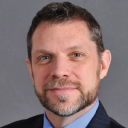Over the past decade, an increasing number of community foundations in the United States have joined the ranks of global grantmakers. What’s brought about this trend? In large part it has been the result of demographic shifts, with more and more foreign-born Americans coming into wealth and wanting to give back to their home countries. Alongside this, more and more community foundations in the U.S. are beginning to define ‘community’ within the context not just of place but also of the people who live there. Now, when donors to community foundations ask to give internationally, more and more are responding positively.
To explore these issues at the Council on Foundations’ annual conference, Anne McEnany, President and CEO of the International Community Foundation, led a panel discussion entitled ‘Domestic Global Communities: How U.S. Community Foundations Are Working Beyond Borders.’
The move to global grantmaking by community foundations has occurred across the U.S., including in some unexpected places. Cedar Rapids, located in the largely rural Midwest heartland state of Iowa, can hardly be called a hotbed of global engagement, yet the Greater Cedar Rapids Community Foundation carries out global grantmaking to respond to the wishes of some of its donors. Les Garner, the foundation’s President and CEO, shared his enthusiasm for this trend but also noted the enormous challenges, especially around language and compliance with U.S. regulations regarding cross-border grantmaking by U.S. foundations and donor-advised funds. Les noted that, though there are resources they can tap to make things easier, these can sometimes be expensive. The major cost, though, is one of staff time. To manage this, the foundation has a plan: First, to build the knowledge base of dedicated staff on global grantmaking; second, to put in place a formal system that will allow them to manage global grants as efficiently and cost-effectively as possible; and third, to establish partnerships with organizations such as NGOsource to help them do their international work.
According to Sylvia Perez, VP for Corporate Governance and International Affairs, the Cleveland Foundation sees international giving as an important knowledge tool, allowing them to bring lessons learned from around the world back home to Cleveland. The Cleveland Foundation has been a champion of efforts to strengthen connections between U.S. and Latin American community foundations through participation in an informal funder alliance called the Working Group on Building Broader Communities in the Americas.
Unlike Cedar Rapids and Cleveland, Seattle, Washington is a city very much connected to the world outside U.S. borders: an estimated 1 in 5 residents in King County (Seattle’s municipality) are foreign-born, and an estimated 1 in 3 jobs is linked to the global economy. For these reasons, it has made a great deal of sense for the Seattle Foundation to engage in global grantmaking. Michelle Frix, Chief of Staff, is proud of the robust global offerings at the foundation, including the hosting of globally engaged support organizations and donor-advised funds, philanthropic advising for international causes, learning and educational opportunities such as donor delegations and a global philanthropy guide, and the facilitation of collective giving.
Following panellist presentations, the discussion turned to a quite interesting conversation on what are perhaps some real contradictions in the way community foundations operate in the U.S. versus globally. Noted Jenny Hodgson of the Global Fund for Community Foundations, community foundations are keen to hold up their connectedness to, and unique insights into, their local communities as an essential part of their value proposition. However, this seems to go out the window when it comes to international grantmaking, which looks much more transactional and donor-driven than strategic and community-driven. Continued Jenny, much of the growth of community philanthropy in the Global South has been in a response to the brokenness of the international aid system, where top-down approaches have kept communities on a short leash and relegated them to passive beneficiary status rather than as actors in their own development. Community philanthropy offers an alternative, but when U.S. community foundations channel their donors’ money to large INGOs from the Global North, whose large structures and significant power are often part of the problem, they again may be working against their core values, strategies, and theories of change as community foundations.
This session—practically helpful thanks to the panellists and provocatively thoughtful thanks the audience Q&A—concluded with an expression of interest among participants to engage in the kinds of challenging issues that were raised, including on the part of the Council’s global philanthropy program.
John Harvey is an independent global philanthropy professional.






Comments (0)